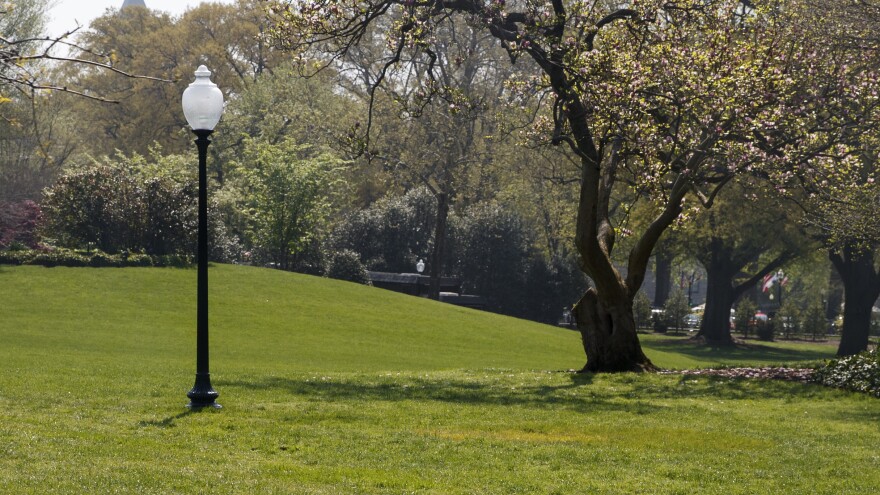The gift was symbolic — honoring U.S. troops' sacrifice during a legendary World War I battle and the ongoing alliance with France. What to make of it, then, when the oak tree that French President Emmanuel Macron and President Trump planted with much ceremony then unceremoniously went missing?
The question took root in Washington, D.C., over the weekend, after the sapling vanished — the spot where both leaders used golden shovels to plant the tree on the South Lawn is now covered by a swatch of yellowed turf.

Some called it a mystery, one with diplomatic overtones. Where, they asked, is the oak tree that was planted just days ago?
An answer has finally emerged: The young tree, which had a plastic bag around its roots when it was planted, was removed prophylactically because of concerns about disease.
"It is in quarantine which is mandatory for any living organism imported to the US," French Ambassador Gérard Araud wrote on Twitter. "It will be replanted afterwards."
It is in quarantine which is mandatory for any living organism imported to the US. It will be replanted afterwards. https://t.co/XyJRKTgPWW
— Gérard Araud (@GerardAraud) April 29, 2018
The White House has confirmed that the tree was "moved to a facility" and will be replanted as soon as possible, NPR's Scott Horsley reports. A White House official said the move was meant to "ensure the tree's long-term survival."
Araud added that the tree's roots were "carefully isolated" to prevent the spread of any diseases or parasites, and that its roots had been "enclosed in a plastic protection."
The White House so far hasn't commented on the tree's conspicuous absence.
The oak comes from the site where the Battle of Belleau Wood raged in northern France in June 1918. U.S. Marines helped block a German offensive in fierce fighting that earned them their "Devil Dogs" nickname. Nearly 2,000 U.S. troops died in that battle, including more than 1,000 Marines. Thousands more troops were wounded.
"I am pleased that this tree that grew close to the famous 'Bull Dog' fountain in the soil, where your soldiers shed their blood to defend France," Macron said, "can now take root here at the White House in front of us as a symbol of the sacrifice and the common battles that France and the United States have led together."
The oak planted April 24 was only the latest in a long string of ceremonial tree plantings on the White House grounds.
In 1991, Britain's Queen Elizabeth II helped to plant a little-leaf linden tree on the South Lawn after a storm damaged the one her father, King George VI, had planted in 1937.
As President George H.W. Bush noted on another tree-planting occasion, in 1990, a number of White House trees have historic connections, including an oak tree planted next to the Oval Office by President Dwight D. Eisenhower.
Reeling off other examples, Bush mentioned Grover Cleveland's Japanese spiderleaf, Herbert Hoover's oak and a magnolia planted by Andrew Jackson next to the South Portico.
Copyright 2021 NPR. To see more, visit https://www.npr.org.





